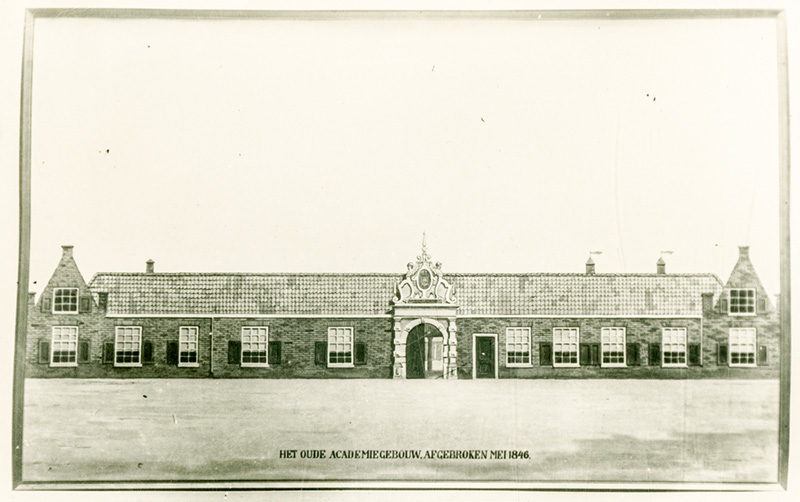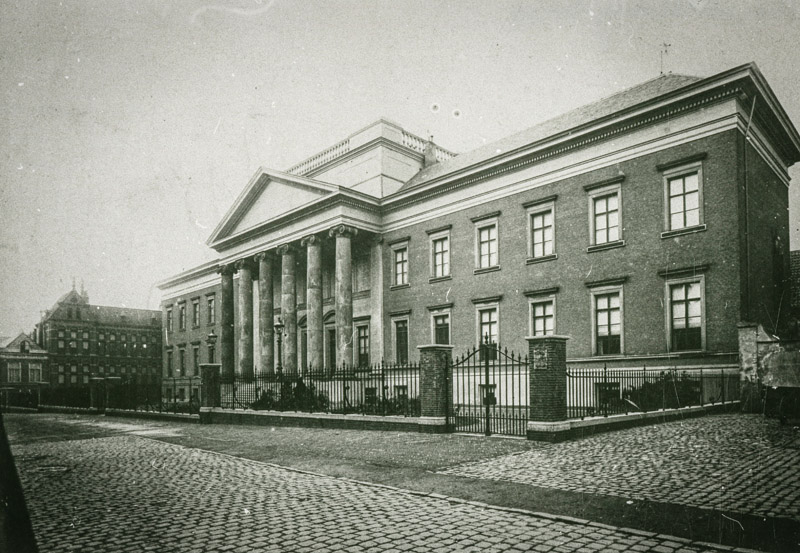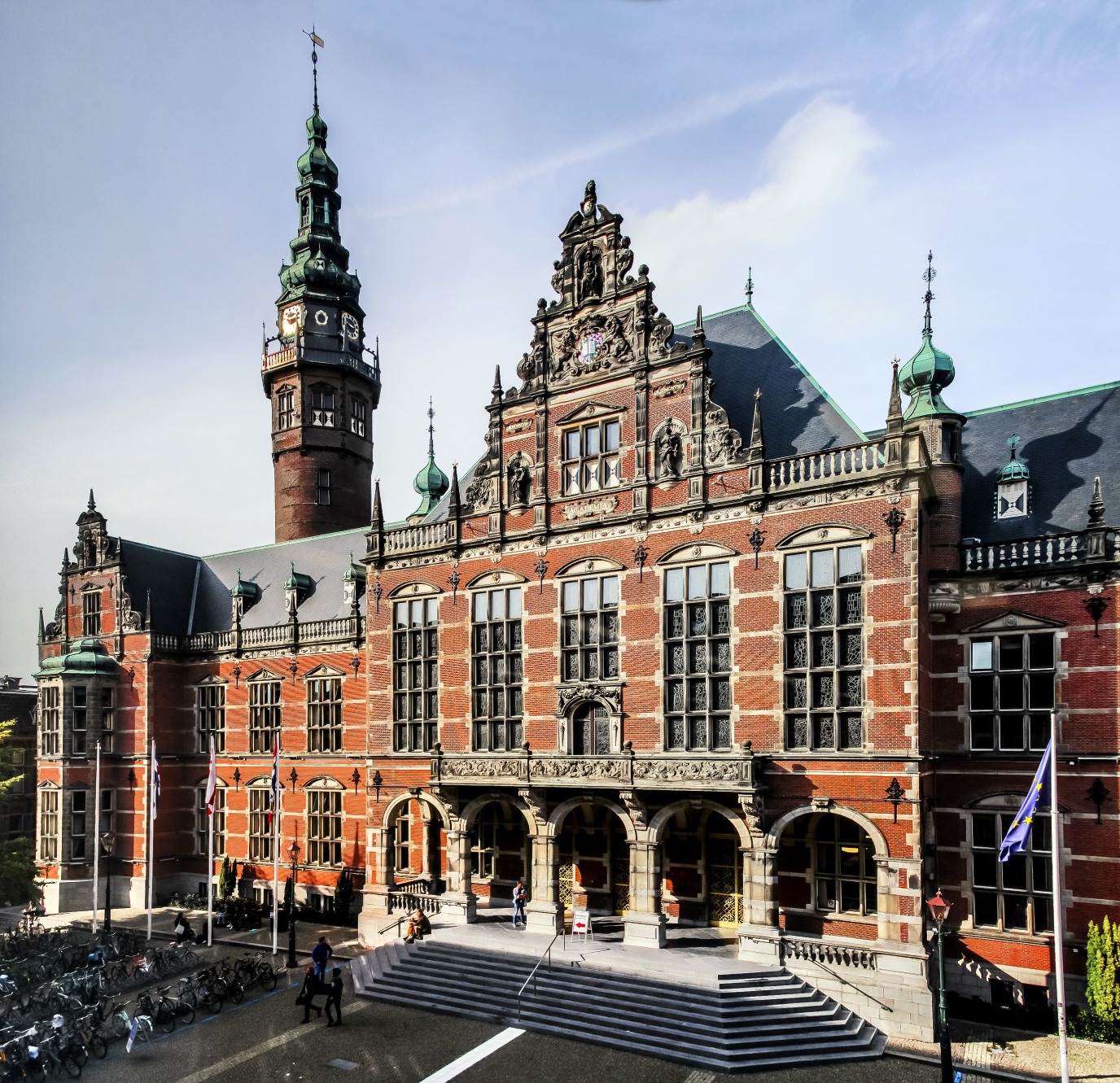UG Buildings: the Academy Building
The University of Groningen as we know it now is more than the Academy Building alone. In this series , based on the podwalk and the Dutch booklet In the footsteps of the Academy, we will put the spotlight on various buildings—and a work of art—of the UG and their history. In this episode: the Academy Building.
In 1614, the University was founded at this location, which has always remained the heart of academic Groningen. The provincial Hogeschool van Stad en Lande [Academy of City and Surroundings], as the University was then known, moved into the former monastery buildings. These buildings had been vacant for quite some time, because Groningen had joined the Republic in 1594. This signified the end of the rule of the Spanish king and the power of the Catholic Church. Catholic monasteries and churches were confiscated and assigned to other purposes.

The Academy Building as it stands today was opened in 1909, three years after the second academy building, built in 1850, was destroyed by a large fire. Government architect Jan Vrijman designed a building in the style of the Northern Netherlands Renaissance of the early 1600s. The idea behind it was that if the University had had enough money upon its foundation in 1614, this is what the building would have looked like. That is why the building looks older than it is and, while climbing the steps of the Academy Building for the first time, you can hear many a student sigh in relief: ‘Now this is what I call a University..’
On the outside, some interesting details can be seen. The rich decorations around the middle window are based on illustrations of the original Academy entrance of 1614. From top to bottom: the Dutch lion and the University crest bearing the motto Verbum Domini lucerna pedibus nostris—The word of the Lord is a light for our feet—from Psalm 119. That is a clear reference to the fact that religion played an important role at the young academy. Other texts that can be seen are Renovatum and AD MCMVIII—Rebuilt in 1908. Below that are the words Nec pluribus impar. Literally translated, this means ‘Not unequal to many’, or in other words: Also equal to superiors, even withstanding superior powers.

On the façade we see five allegorical statues made by Petrus Ackermans. We can see Minerva, goddess of wisdom, war, and fine arts, with a helmet and suit of armour. Below and to the left of her is Scientia—science—with a book and torch. To the right of Scientia we see Historia—history—with a scroll. All the way to the left, at the uppermost façade is Prudentia—sensibility— with a mirror and a snake to her side. All the way to the right, we see Mathematica—maths—holding a globe.
Want to find out more?
Check our overview page for the editions on the Ubbo Emmius monument, the University Library, the Röling Building, the former Laboratory for Hygiene, the former Astronomy Laboratory, the Institute of Archaeology, the House with the 13 Temples, the Old Courthouse, the Main Administrative Building and the Faculty of Philosophy.
Are you interested in the buildings and history of the UG? You can download the podwalk ‘In the footsteps of the Academy’ for free. Go to the App Store (Apple) or Google Play (Android) and search for ‘Op stap met Aletta’. The walking route is also available as a book from the I-Shop (University shop) for €9.95.

More news
-
15 September 2025
Successful visit to the UG by Rector of Institut Teknologi Bandung
